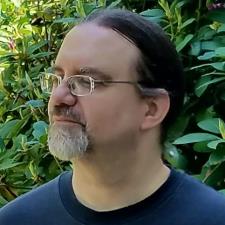Thomas R. answered • 05/10/19
Over 25 years of experience and a sense of humor about math
You already raised a very important factor: modern films can be edited on a specialized digital system, whereas older films required manual editing. The antiquated method not only added time but weakened the physical film as well. There are other reasons, though.
First, film used to be a complicated and time-consuming process. The cameras were huge and heavy, and made so much noise that they had to be locked in a tiny booth. They also punched holes in the physical film during the shooting process, so the floor wound up covered with thousands of plastic flakes. . Microphones were often placed in concealing devices like a lamp or vase of flowers, and actors in the "talkie" era had to hover over them and enunciate with ridiculous clarity. This meant that every scene became static, preventing the sort of coverage that allowed for interesting edits in the first place.
Secondly, you assume that cutting is a fairly modern creation and, while the frenetic nature of it is fairly modern, cutting began with the earliest filmmakers like Edison. He would film a chase scene by having everyone run past the camera, move it several feet to one side, then repeat this process for around ten minutes at a time (I have watched some of his earliest efforts). Early filmmakers experimented with editing tricks like having a variety of footage simultaneously splashed across the screen in different chunks -- not mere blocks, but fanned out in odd patterns or otherwise scattered) and even those chunks moved around the screen! By comparison, modern movies seem downright sedate.
As movies evolved, smaller cameras allowed for more coverage of a scene --filming different actors in the same scene, as well as establishing shots or other elements -- and modern editing techniques allow for far simpler editing methods. Of course, the recent rise of IMAX as a profit center has thrown heavier cameras back into the mix, so watch for slightly more static filming techniques on pricey films.
Finally, the studios tend to assume modern viewers have the attention span of a mouse on Dexedrine, so they encourage rapid editing in action films (though not in period dramas, romantic comedies, or similarly slower films). I once timed the shots in a Zalman King movie and didn't see a single one exceeding 2 seconds! However, other filmmakers like John Sayles have taken the opposite tack and not only avoided rapid edits on some of their films, but disguised edits to create a seamless look. The film "Russian Ark" took this to the ultimate, shooting a very elaborate film with a huge cast in a single, feature-length shot!
Action scenes, such as fight scenes, became so frenetic in films like "Kingsman: The Secret Service" that there has been a sort of rebellion by filmmakers,showing fights in wider shots with fewer obvious edits to "prove" to audiences that the actors are really doing their own stunts and not using CGI or excessive wirework. It is the exception, not the rule, for the moment, but seems to be growing the last few years.
For more information on early filming techniques and special effects, I strongly recommend the series "Hollywood: Film on Film:, which documented the early history of cinema and interviewed dozens of actors, directors, producers, and stuntmen about their work in that era.





